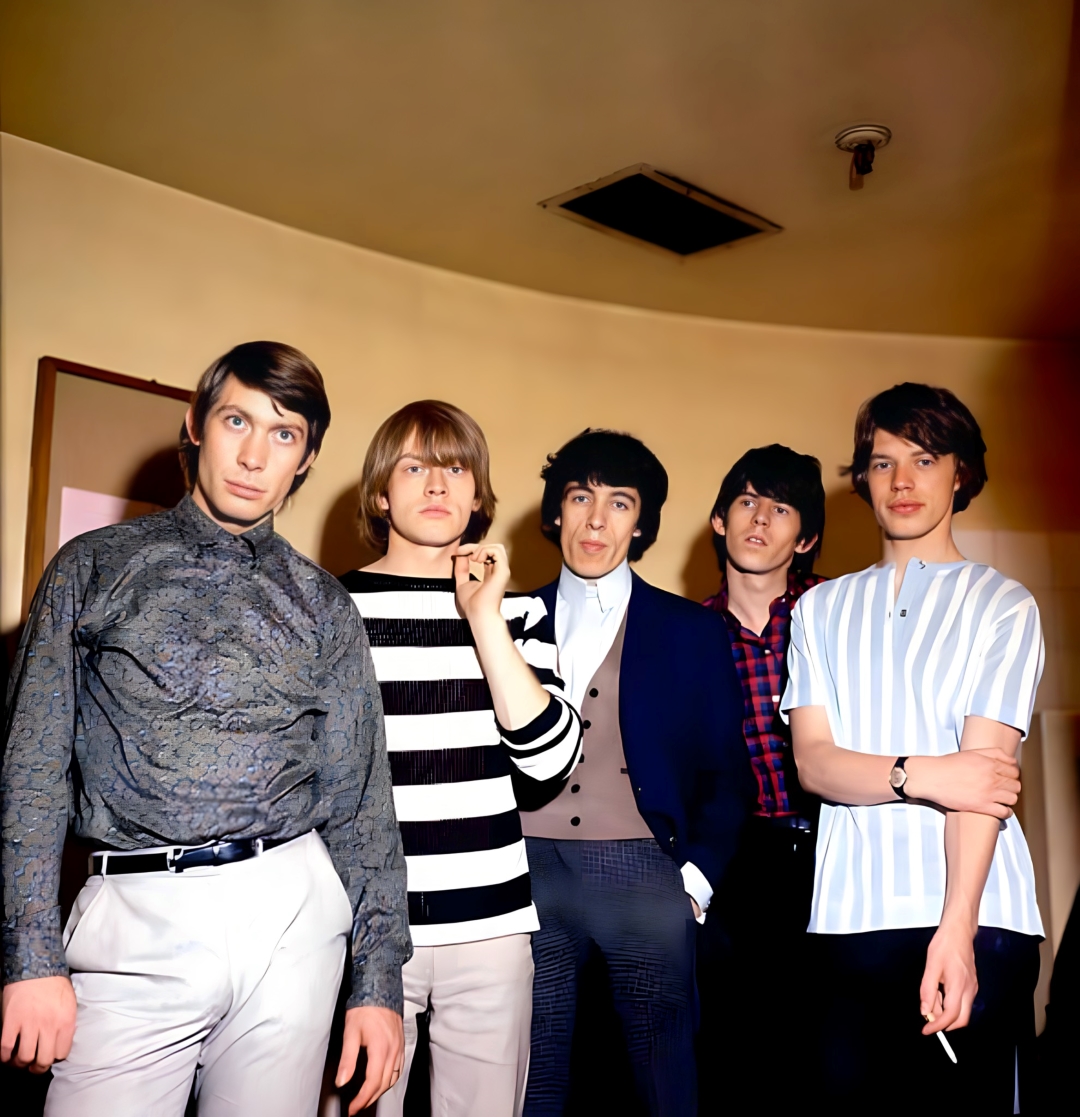🌪️ The Summer of 1969: A Band at a Crossroads
When “Honky Tonk Women” hit the airwaves in July 1969, the Rolling Stones were standing at a turning point. Brian Jones, their troubled founder, had just been dismissed from the band in June due to his spiraling drug issues and inability to keep up with recording or touring. Less than a month later, he was found dead in his swimming pool at Cotchford Farm. The band was shaken, but also faced with a brutal reality: they had to keep moving forward, or risk losing the momentum they had built.
That was the backdrop when “Honky Tonk Women” was released. A song born out of grit, swagger, and a heavy dose of country-blues influence, it wasn’t just another single—it was a declaration that the Stones could survive upheaval, thrive in chaos, and even define the sound of the times.

🥁 The Birth of a Classic Riff
The foundation of “Honky Tonk Women” lies in one of Keith Richards’ most infectious riffs. The track opens with Charlie Watts’ unmistakable cowbell, instantly grabbing attention before Keith’s guitar cuts in with a raw, syncopated lick. Unlike some of the Stones’ earlier hits, this wasn’t built on speed or distortion. Instead, it had a loping, loose, blues-driven rhythm that felt both playful and dangerous at the same time.
Mick Jagger’s lyrics told the story of encounters with women of questionable reputation—a cowboy barmaid in Memphis, a divorcee in New York City. Delivered with his trademark sneer, Jagger transformed what could have been a simple honky-tonk parody into something darkly seductive, drenched in irony and swagger.
The band recorded the song in London’s Olympic Studios with producer Jimmy Miller, who once again pushed them into new territory. Miller himself played the iconic cowbell intro, setting the stage for one of the Stones’ most recognizable grooves.
🎤 From Country Experiment to Rock and Roll Monster
Few fans knew at the time that “Honky Tonk Women” had an earlier incarnation. The Stones first wrote it as a country tune, “Country Honk,” which would appear later that year on the album Let It Bleed. That version leaned fully into the twang, fiddles, and acoustic guitars of Nashville-inspired sound.
But Richards and Jagger knew the song had more potential. By electrifying it, adding that funky groove and turning up the swagger, they transformed it into something entirely different—a stadium-ready rock anthem. The Stones were always masters of borrowing from American roots music and reshaping it into something uniquely their own, and “Honky Tonk Women” was perhaps the clearest example yet.
📀 A Chart-Topping Smash
Released on July 4, 1969, “Honky Tonk Women” immediately shot to the top of the charts. In the U.K., it reached No. 1 in just two weeks. In the United States, it became their fifth No. 1 hit on the Billboard Hot 100.
At a time when the Beatles were still dominating the airwaves, and American bands like Creedence Clearwater Revival and The Doors were rising fast, the Stones’ success proved they weren’t just keeping up—they were defining the cutting edge of rock. The single’s B-side, “You Can’t Always Get What You Want,” was itself a masterpiece, but “Honky Tonk Women” stole the spotlight, perfectly suited to both radio and the explosive live stage.
🎶 The Song on Stage: From Hyde Park to Altamont
The timing of the release made “Honky Tonk Women” inseparable from one of the Stones’ most legendary years on stage. On July 5, 1969, just days after Brian Jones’ death, the band performed a free concert at Hyde Park in London, with more than 250,000 people in attendance. It was the live debut of new guitarist Mick Taylor, and one of the emotional peaks of the band’s career.
“Honky Tonk Women” quickly became a fixture in their setlists, usually arriving as a burst of raw, bluesy energy that ignited the crowd. Whether it was the triumphant U.S. tours of 1969, the sprawling Steel Wheels shows in the 1980s, or the modern stadium spectacles of the 2000s, the song always carried the same punch. The cowbell, the riff, Jagger’s drawl—it was a signal that the party was about to get dirtier, louder, and more unrestrained.
Even at the infamous Altamont Free Concert in December 1969—where violence and tragedy would overshadow the music—the song was part of the soundtrack, capturing the spirit of danger that seemed to hover over the Stones that year.
⚡ Why It Still Resonates
What makes “Honky Tonk Women” endure more than fifty years later? Perhaps it’s the way it straddles genres without ever losing its core identity. It’s country, but it’s not. It’s blues, but transformed. It’s rock, but looser than most of its contemporaries.
It also perfectly captures the Stones’ genius: their ability to take the raw, messy, often unglamorous sides of life—bars, lust, temptation—and turn them into art that feels both universal and dangerous. While the Beatles were writing about transcendence and love, the Stones were diving into the muddy corners of human behavior, and “Honky Tonk Women” was a masterpiece of that ethos.
🌍 The Legacy
Today, “Honky Tonk Women” remains one of the Stones’ most beloved songs. Rolling Stone magazine once ranked it among the greatest songs of all time, and it continues to be a live favorite, blasting out of stadium speakers around the world.
It is a song that reminds fans not only of a wild summer in 1969, but also of the Stones’ resilience. They could lose a founding member, stumble through personal chaos, and still emerge with a track that defined the sound of an era.
“Honky Tonk Women” wasn’t just a No. 1 single—it was proof that the Rolling Stones had fully stepped into their role as the world’s greatest rock and roll band.